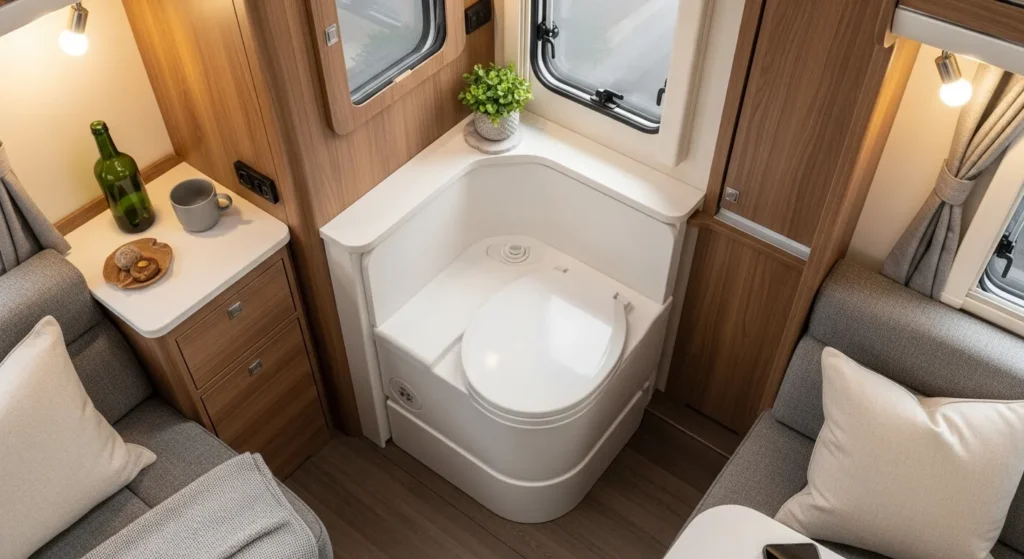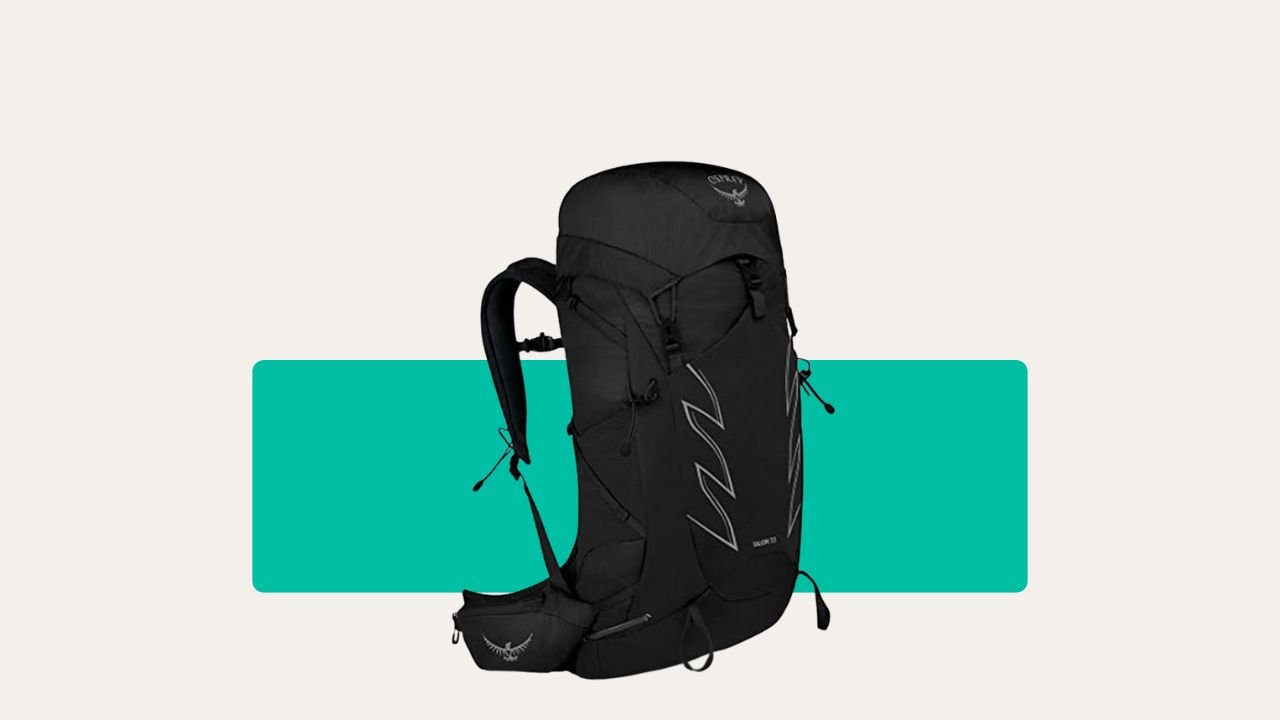Starting out with caravanning is exciting, but let’s be honest, it comes with a learning curve. One thing that often throws beginners is the toilet. Yep, that humble little loo in the corner that somehow works without plumbing.
If you’re not sure how it all works, you’re not alone. I remember my first trip – I stood scratching my head at the cassette hatch, wondering where on earth the flush came from. The good news? Caravan chemical toilets are simple once you know the basics.
In this guide, I’ll walk you through how they work, what each part does, and how to use them properly – without making a mess. We’ll also cover how to clean and empty them.
Caravan Chemical Toilets at a Glance
Let’s clear up a common myth: caravan chemical toilets aren’t just a “last resort.” Modern ones are dead simple, surprisingly clean, and absolutely critical for anyone who wants true freedom on the road, especially during UK wet spells and when the nearest loo is a grim, distant block across a muddy field.
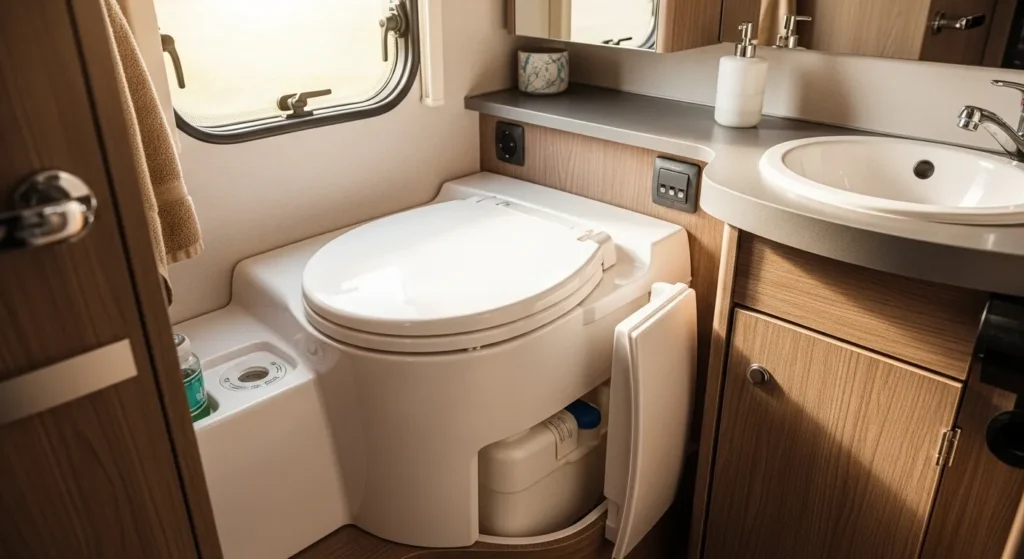
A caravan chemical toilet is basically a compact toilet that uses chemicals to break down waste and control smells. You’ll find them built into caravans, motorhomes, campervans, and even as portable units for tents.
Why bother? Because you never know when the weather will lash down or when you’ll need the loo at three in the morning, miles from a toilet block.
Core Parts of a Caravan Toilet
Before you start pulling levers and adding stuff, it helps to know what bits do what. Here are the key parts you’ll almost always see:
Toilet Bowl, Seat: Where you do your business, just like a home loo.
Flush System: This might be a manual pump or an electric button. It uses water to rinse the bowl after use.
Fresh Water Tank: Holds water for flushing. In some models, it’s separate; others use the main water supply.
Waste Holding Tank (“Cassette”): The bit below the toilet where waste is stored, sealed off from the living area.
Seal/Lip Seal: This rubber seal closes off the waste cassette, locking in smells, stopping leaks.
Chemical Additives: Special blue, green, or pink fluids that break down waste, kill bacteria, and kill those nasty odours.
If you ever open up your cassette, gloves are a must – no exceptions. I learned that one in the Lake District after a bumpy ride shook things up inside my waste tank.
How a Chemical Toilet Works: Step by Step
Ever wondered what actually happens when you flush a caravan toilet? Here’s the process, step by step, minus the nonsense:
1. Using the Loo
Do what you need to do. Try to keep paper use to a minimum—more on the best type of loo roll later.
2. The flush
Once you’re done, hit the flush – whether manual lever or electric button, depending on your setup. This sends water from the flush tank into the bowl, giving it a rinse and pushing everything down into the waste cassette below.
3. Waste drops down
Everything ends up in the cassette, which already has a mix of water and toilet chemicals (usually blue or green). These aren’t just for show – they do a lot of the heavy lifting.
4. Chemical Breakdown
The chemicals start working right awayThey break down solids and paper, kill bacteria, and keep nasty smells at bay.
5. The seal
After flushing, close the flap or slide. This rubber-sealed barrier keeps smells and mess locked safely inside the cassette. It's one small flap, but it makes a massive difference to your caravan's air quality.
6. Emptying the cassette
When the level indicator shows full – or your nose gives you a less polite warning – it’s time to empty. Head outside, open the hatch, unlock the cassette, and carry it (carefully!) to the chemical disposal point. Empty, rinse, refill with chemicals and a bit of water, slot it back in, and you’re good to go.
It’s easier than it sounds – and way better than holding it until the next service station.
Types of Caravan Toilets and Chemicals
Not all caravan toilets are built the same. Here are your main choices:
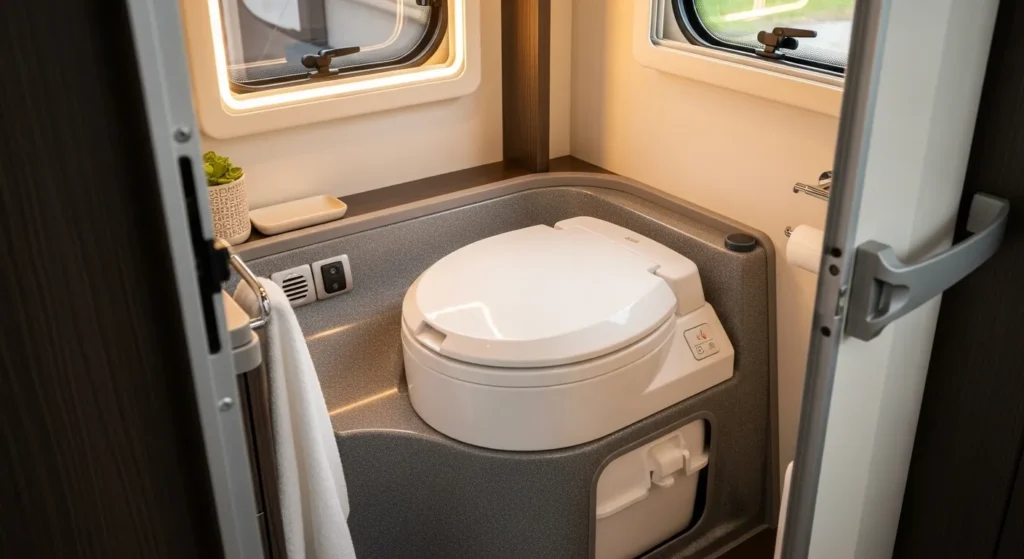
Built-in Cassette Toilets: These are attached to the van, usually part of a proper bathroom. The waste cassette slides out for emptying via an outside hatch – no need to go inside and stink up your living space.
Portable Chemical Toilets: Fully self-contained. Includes a top tank for flush water and a bottom tank for waste. Loved by tent campers and festival-goers, or as a backup for old caravans.
Both types rely on toilet chemicals to keep things civilised. Here’s what you’ll be choosing from:
- Blue Chemicals: Go into the waste cassette. They break down solids and pulp loo roll, kill bacteria, and block odours. Powerful stuff, but not always environmentally friendly.
- Green Chemicals: Same job as the blue, but made to be kinder to the environment. Some campsites only allow these, especially in national parks.
- Pink Chemicals: These go in the flush water (if your system has a separate flush tank). Their job is to freshen the bowl and keep everything slippery so nothing sticks.
Reasons Campers Choose Chemical Toilets
Some think they can do without a proper loo. After one cold, rainy night running to a public block, you’ll join the chemical toilet club. Here’s why they make sense:
- Zero Smell When Used Right: The correct chemicals stop smells in their tracks, as long as you actually use them and keep to the instructions.
- Low Water Use: Unlike a home toilet, every flush uses just a splash of water – vital if you’re off-grid with only your carried supply.
- Portable & Flexible: You can position a portable loo anywhere in your tent or awning, or use the built-in kind in your van without packing up.
- Hygienic & Easy to Clean: Provided you empty and clean them right, chemical toilets stay far more sanitary than public blocks at a muddy summer festival.
Tips for Easy Use and Cleaning
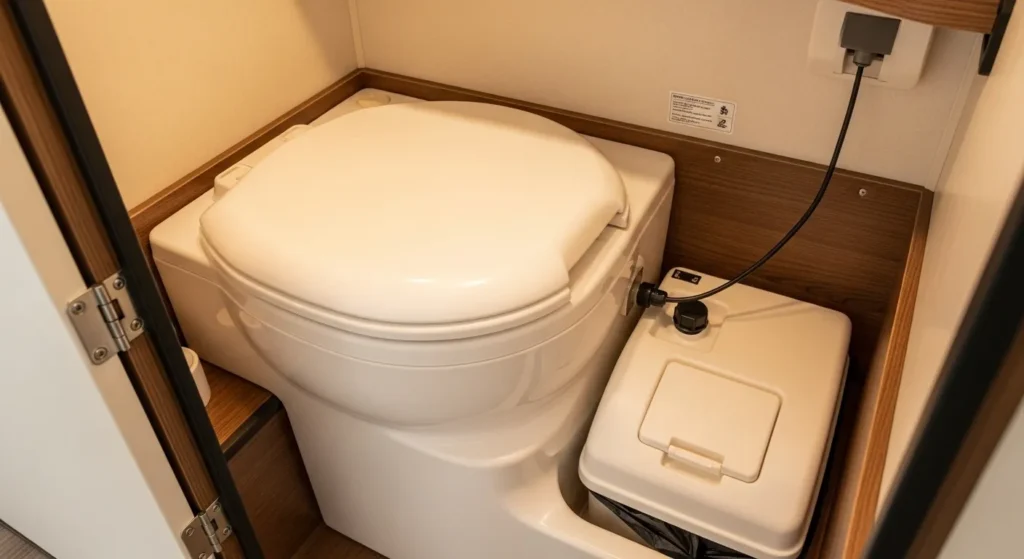
A smooth camping trip means not worrying about the loo at 2 a.m. Here’s what keeps your toilet hassle-free:
Add Chemicals First: Always prime your cassette with the correct dose of chemical and a little water before use.
Never Top Up With Harsh Cleaners: Stick to chemicals recommended for toilets. Household products destroy rubber seals and void warranties.
Empty Regularly: Don’t wait for full – 2/3 is the sweet spot. It’s lighter, less smelly, and less likely to go wrong.
Always Use Proper Disposal Points: Never empty a chemical toilet into a normal loo, ditch, or tree. Not only is it grim, but it’s illegal and ruins the ground for everyone else.
Seal Maintenance Matters: If your toilet flap sticks, clean the seal gently and use a recommended lubricant (not cooking oil!).
Clean After Every Trip: Fully rinse both the bowl and the waste cassette before you put the caravan away. Mould likes to move in if you skip this.
Quick Answers to Common Questions
How long does the waste cassette last before emptying?
Usually 1-3 days for two people, or less if you’re using it like a home toilet. Ignore this advice and you’ll never forget the stink.
Can you use regular toilet paper?
You can, but special quick-dissolve paper breaks down better. If you use standard stuff, dump your cassette more often to prevent clogs.
Is it actually hygienic?
Yes – if you add the right chemicals, clean regularly, and empty at proper points. It’s leagues above grim campsite blocks.
What happens if you forget to add chemicals?
Don’t. I’ve made this mistake after a long drive. The smell is instant, and cleaning later is a real pain.
Key Things to Remember for the Road
- Portable: Caravan chemical toilets go where you go, no matter the weather or campsite rules.
- Low Smell: With the right setup, smells vanish – or at least don’t ruin your evening hot chocolate.
- Water Efficient: One refill lasts longer than you think. Great for wild camping, festivals, and UK stays with limited water.
- Regular Upkeep: A quick clean, chemical top-up, and routine check make all the difference. Always carry extra chemicals and gloves.
A little respect for your toilet means never being caught out in the rain, in your pyjamas, hunting for a cold, spider-ridden block in the middle of the night. Investing a bit of time in learning how your caravan chemical toilet works is worth every second on the open road.
For more practical camping kit tips, check out our other guides – because a happy camper is one who never worries about the weather or the state of the loos. Stay warm, stay dry, and keep the toilet sweet.

